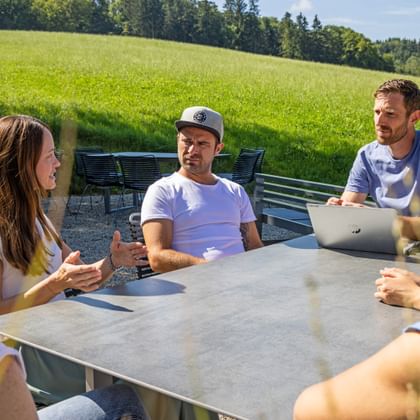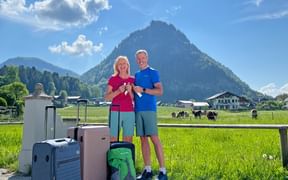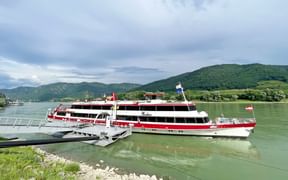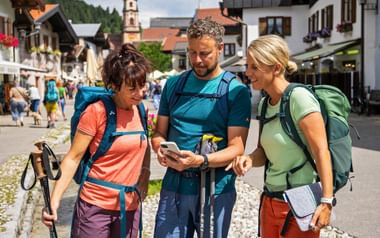How does CO2 offsetting work?
Even though your vacation by bike or on foot is inherently the most environmentally friendly way to travel, CO2 emissions are still generated during your active holiday:
- Your accommodation leaves a CO2 footprint due to electricity consumption, heating, or air conditioning.
- The production of food for meals generates CO2, and energy is also required during excursions or cable car rides, resulting in additional CO2 emissions.
- Additionally, we reliably transport your luggage from point A to point B, but unfortunately, this also comes with generated CO2 emissions.
To balance this out, carbon dioxide (CO2) compensation follows this principle: Certain measures that either remove the same amount of CO2 from the atmosphere or prevent emissions elsewhere are used to offset CO2 emissions. This can occur, for example, through reforestation, which sequesters CO2. Replacing existing energy sources with renewable energy also serves as an effective measure to prevent CO2 emissions. There are indeed many projects, but they all share the same goal:
To neutralize climate impact through specific measures, thereby minimizing the CO2 footprint elsewhere.
avoid
CO2 emissions
Binds
CO2 emissions
Investment in
renewable energies
How is the CO2 VALUE OF OUR ORIGINAL TOURS determined?
We carefully calculate the total value of all emissions per travel and per person using the CO2 calculator "Carmacal," specifically designed for tour operators. The individual components for our original tours are calculated as accurately as possible and assessed in kilograms of CO2.
What lies behind the values:
Compensation: Our contribution to the LIVELIHOODS CARBON FUNDS
Accommodation, luggage transportation, local catering and activities contribute to the overall impact, which we offset in full as part of the Livelihoods Carbon Fund's climate protection projects. Our focus is on supporting projects that deal with the reforestation of mangrove forests.
To offset the generated CO2 emissions, we invest in the Livelihoods Carbon Funds. These funds support projects worldwide that not only reduce CO2 emissions but also empower local communities and improve their livelihoods. We particularly focus on projects for the reforestation of mangrove forests.
Whether in Senegal, Indonesia, or India, these projects help restore mangrove forests, thereby reducing CO2 emissions and improving the livelihoods of local people. This approach fosters ecological sustainability while simultaneously promoting the social and economic well-being of the communities.
Why Mangroves?
Mangrove forests play a key role in climate protection. They store significant amounts of carbon, protect coastlines from erosion, and provide habitat for numerous species. By reforesting these unique ecosystems, we not only contribute to CO2 reduction but also help protect biodiversity.
An excerpt from the PROJECTS
Senegal: OCEANIUM
Mangrove reforestation in Casamance
In collaboration with the local organization Oceanium, one of the largest mangrove reforestation projects in the world has been initiated in the Casamance region of southern Senegal. More than 79 million mangrove seedlings have been planted, contributing to the recovery of damaged coastal ecosystems. The project also strengthens local fisheries and protects coastal areas from the impacts of climate change.
Indonesia: YAGASU
Mangrove rehabilitation in Sumatra
On the Indonesian island of Sumatra, LCF collaborates with the NGO Yagasu to restore mangrove forests. Over 18,000 hectares of degraded mangrove areas are being reforested. The project not only promotes the protection of coastlines against erosion and storms but also improves the livelihoods of local communities by supporting sustainable fishing and beekeeping.
India
Mangrove rehabilitation in the Sundarbans Delta
In the world-renowned Sundarbans Delta, known for its biodiversity and fragile mangrove ecosystems, a comprehensive reforestation project has been established. The goal is to protect the coastline from rising sea levels and extreme weather events. At the same time, the project supports the local population by creating sustainable jobs in fishing and agriculture.





